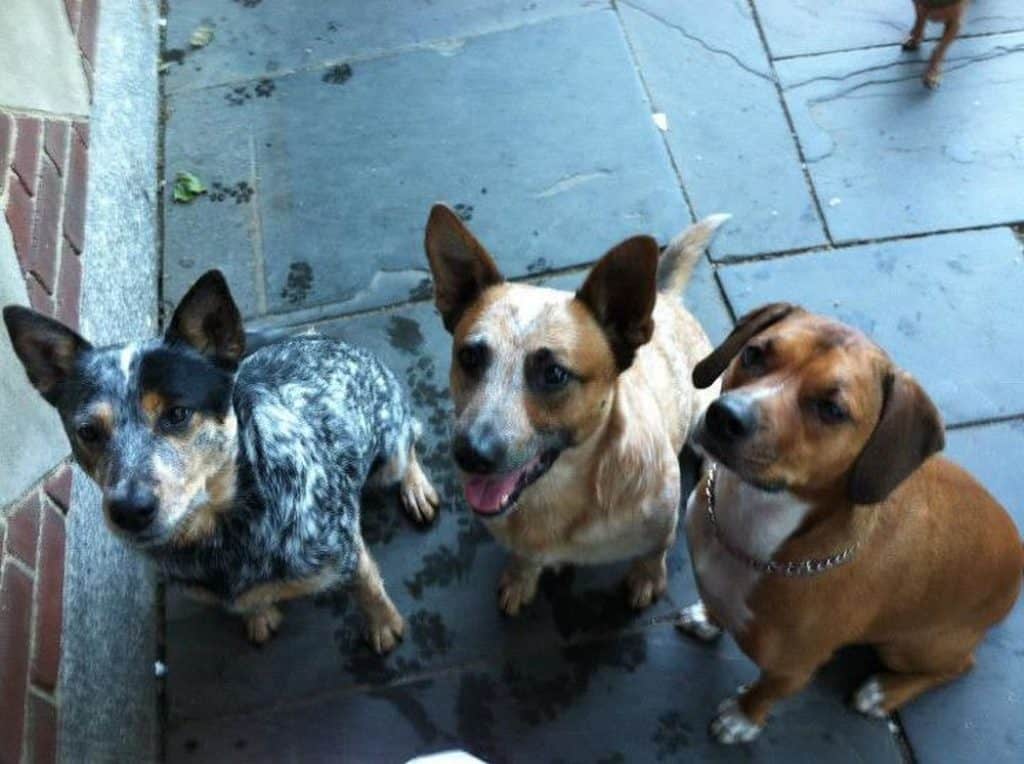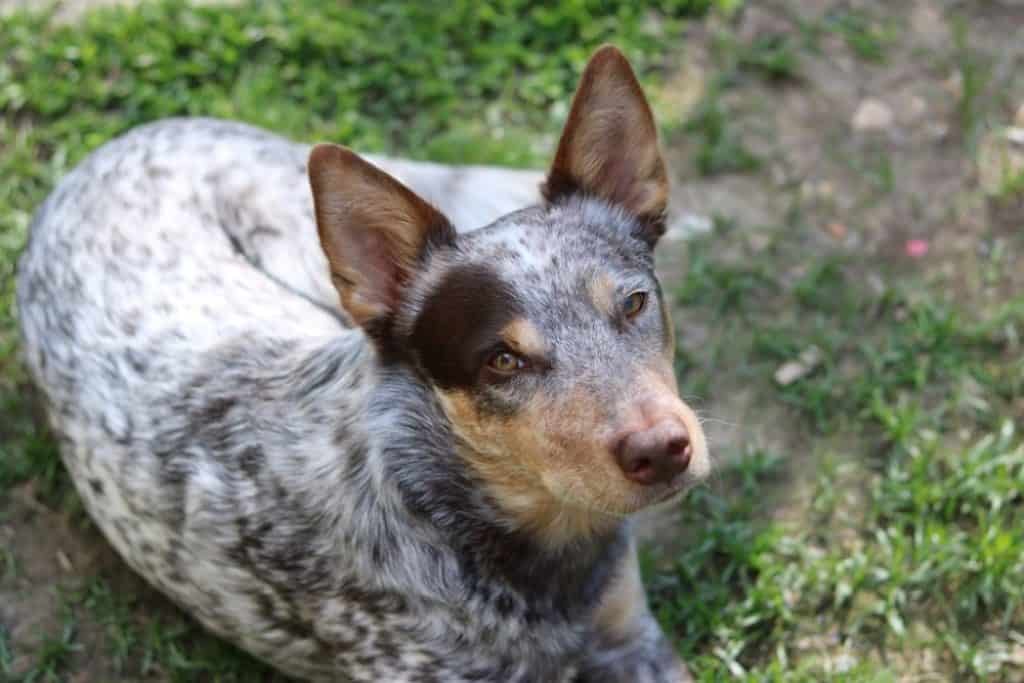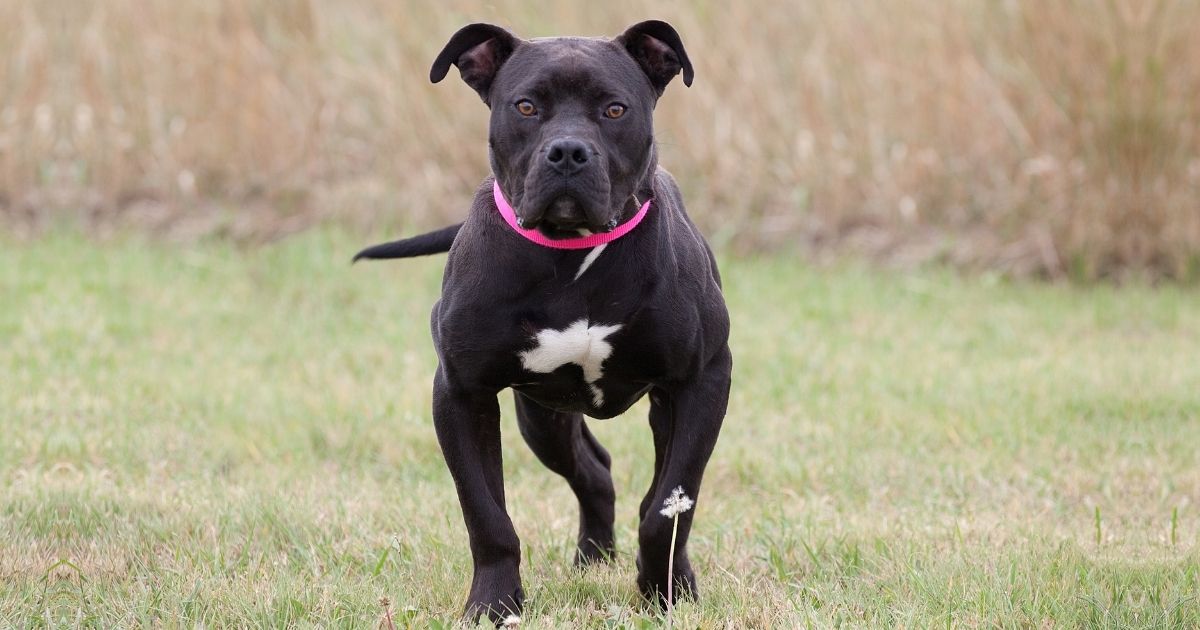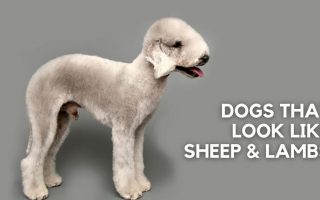Blue Heelers are incredible dogs who love to enjoy their time with humans. You will always see them playing around, happy, and lifting the house with their high energy.
But that’s not always the case.
Dogs who are good with humans don’t necessarily have to be the same way with other dogs.
If you have an Australian Cattle Dog, I’m sure you want to know whether these fur buddies will go along with other dogs or perhaps another upcoming dog pet in the family.
So here’s a complete guide that answers your question:
Are Blue Heelers good with other dogs to help you get a proper idea of your Dog’s nature.
[wpsm_toplist]
Are Blue Heelers Good With Other Dogs?

Blue Heelers, better known as Australian Cattle Dogs, are bred to be herding and guard dogs.
Their instincts don’t allow them to be kind to other dogs unless they have the proper training for it.
As there are guard dogs, they suspect every other human or dog they don’t know and use their herding instincts to push and boss them around.
Therefore, socializing and training your dog (spoiler alert: I’ll be talking about it in a while) can play a big role in creating a cohesive and peaceful relationship between your Blue Heeler and other dogs.
Not many people realize that training to socialize isn’t something you can teach your dog in a month, if not a week, and get him to be kind with other dogs.
It’s always best to start socializing training early to help him familiarize himself with animals of his own type and learn to differentiate between suspicious dogs and friendly dogs.
Regardless, these moments should not worry you like your Blue Heeler acting up against other dogs can also be the result of:
Frustration
Blue Heelers can easily get frustrated, especially if they have been constrained in your house.
Just like how children create a scandal when they are frustrated,
Blue Heelers also try to show their frustration through aggressive behavior, bark, and make a mess to make them feel heard.
Here, another dog can become their victim, and they both might end up being in a fight.
This behavior can quickly escalate if the dog isn’t close to his owners or there is no threat incentive.
You can expect this to happen more frequently if you keep these dogs at home.
Illness
If your dog used to be a good dog, obedient, and suddenly starts to act violently, pain could be the reason.
It doesn’t necessarily have to be physical pain.
Your Blue Heeler can act out even if he’s going through emotional trauma like death, changed diet, or anything that can trigger these emotions.
In cases like these, they try to get your attention by being aggressive towards other dogs and have other severe behavioral changes.
Fear
These guard dogs have a certain protection instinct that lets them be fearless when protecting you and attacking anyone (dog or human) that poses a risk to your life.
However, when it comes to them, and something seriously scares them and seems dangerous, they may try to seek help by being aggressive towards others dogs in depression and call your attention.
Are Blue Heelers Good With Small Dogs
A well-trained Blue Heeler will never be aggressive towards small dogs.
This is especially true if they have grown up together in the same family and have known each other.
But even without it, as long as your Blue Heeler’s herding instinct doesn’t kick in, they are all good with small dogs.
However, in some cases small dogs have small dog syndrome, and think they are bigger than larger dogs and try to dominate them.
This can lead to them nipping or snapping larger dogs and getting a harsh response from your Blue Heeler.
If you start to notice your small dog showing such signs, you should spectate them before it’s too late to save him.
Many of the Terrier breeds are the ones that suffer from small dog syndrome.
Are Blue Heelers Aggressive?
Blue Heelers aren’t generally the most aggressive dogs you can find out there.
Sure, they may be dominant and have herding instincts that can give an impression of them being too aggressive, but it’s always the dominance that annoys other dogs and embarks a fight.
However, aggression isn’t always in the personality of dogs. It can also result from poor training and experience that made them who they are today.
As they meant to be guard dogs, they have the natural urge to please their owners and solely protect them wherever they need.
If the “other dog” happens to be a threat, you can expect a Blue Heeler to leave no stone unturned to intimidate the other dog and keep his family secure at all times.
However, as mentioned above, there are certain cases where Blue Heelers lose their control and can become aggressive.
Here’s how to find out if your dog is about to create a scene.
Ear And Tail Erect
Although it is said that if your dog has an erected tail and it’s wagging, it may be an indication that he’s happy.
However, if both his tail and ears are stiffly erect, it may signify aggression.
Bear Teeth
Bear teeth always come with a snap rather than a full bite to let the other dog know that the next one will be an aggressive bite towards them.
They make their teeth visible as a warning sign to anyone who threatens them or their family (you).
Growling Or Continuous Barking
This may be the most accurate indication as dogs growl and bark while playing.
However, their growls when they are angry may sound a lot deeper and last longer than when they are simply playing.
Their happy and angry mood can be heard from these growls.
Stiff Body Posture
An angry Blue Heeler will have a wider and taller stance to see their stiff posture.
They will have their eyes focused doesn’t the target, and at this time, they usually don’t delay for a second before attaching to the other dog.
Train your dog to listen to you in such heated moments to help you keep your dog under control in these times.
How to Train Blue Heelers to Be Dog-Friendly
Although Blue Heelers can be aggressive towards other dogs, it is rare and can still be controlled with proper training.
The good news is these dogs are brilliant and easy to train, which makes this whole process a complete no-brainer for you.
Once they start to see you as their leader, they will listen to your commands regardless of how intense a situation is.
Here are some of the things you can do to trail Blue Heelers to be dog-friendly.
Obedience
The basic commands are always the hardest yet the most important ones to teach.
Before starting anything, your dog needs to see you as a leader.
Make sure you teach him commands like “sit,” “speak,” or “stay” to help you avoid the fight right before it’s about to escalate.
Play with him
Blue Heeler love to stay outside and play around. In fact, one of the reasons why they are aggressive towards other dogs is because of their frustration.
You can easily eliminate that by ensuring they have the time of their life every day for at least 2 hours to help them come back home satisfied and ready to jump on their bed.
This will keep them busy with things they actually love rather than staying home and creating a mess.
Treats
[amazon box=”B076M77QHC”]
Offering treats can be the best way to get your dog to do what you want. However, it’s easier said than done.
If done right, it can make the entire training a lot enjoyable and easy, but if done wrong, you may have to start another training to correct your dog that is now completely spoiled.
Every time he does everything right, give him [amazon link=”B076M77QHC” title=”a treat” link_icon=”amazon” /], and if wrong, instead of punishing him, just stop giving him his treats.
Repeat this process to ensure you stay the alpha of the pack and not spoil your dog at the same time.
Let him Face His Fears
As you already know by now, fear can also be a big reason why your Blue Heeler acts up in front of other dogs.
The best way to eliminate this is to find out what he is actually afraid of.
If it’s the fear of dogs itself, this means it’s time you start socializing with them and help them make new friends.
However, bear in mind that you are now exposing him to other aggressive dogs that can do more harm than good.
How can you do that, you may ask? Here’s everything you need to know!

The easiest age to teach your dog anything (literally anything) is before 12 weeks.
After that, although it may not be impossible, it’s a lot harder to train him to socialize and get to have a better bonding with other dogs.
Before you begin, remember that socializing also has drawbacks; therefore, always try to add more people and animals into his life slowly and gradually build that relationship.
Later, start the process of habituation where you familiarize the Blue Heeler to get to know new experiences, sounds, smells, signs, and people/dogs.
Hence, they know what is considered “normal” and the things that are actually suspicious.
This can be done by familiarizing him with:
- Different surfaces: grass, sand, mud, water, slippery tiles, and carpets.
- Traveling through the car (different cars if possible)
- Places: lifts, beach, park, crowded markets
- Objects: shapes, balloons, moving objects, moving oculus on a device
- Noises: vacuum noises, bell, horn, phone call, and alarm
- People of different ages, genders, and races
- Other animals: dogs, cats, or anything that is friendly
While doing this, make sure you let them have a positive experience to remember all these new things.
The best way to let him socialize with other dogs is to take him to the park, doggie daycare, or pet cafes where you can have a chance to interact and build that ever-needed bonding.
Reward your puppy or adult dog every time he behaves nicely in front of new changes and experiences.
This will motivate him to keep experimenting and stay calm throughout the entire socializing process.
Considering how socializing is more of an ongoing process than something you need to give one-time training for, always try to take it slow and never push him to do things he doesn’t want to do in the first place.
Baby steps will help him stay committed and have a positive relationship with all the new changes.
Remember, when it comes to socializing adult dogs, you may need to take a slightly different approach.
Where is it okay to let your pup have the freedom to explore and learn new things on his own, for an adult dog, you need to have your supervision at all times.
You never know when they do the unexpected in your absence.
Conclusion
Wrapping up the guide, Blue Heelers, in general, are very friendly.
Still, if they’ve had bad experiences with other dogs in the past or don’t have adequate training to control their frustrated or fearful behavior, things might go out of hand at times.
Therefore, always equip yourself and, most importantly, your dogs with the right training and build that bonding with your dog to stop him right before he’s about to start a fight.
This way, you will be able to control their rare, aggressive behavior and keep them happy at all times.
Tell me how it goes!






